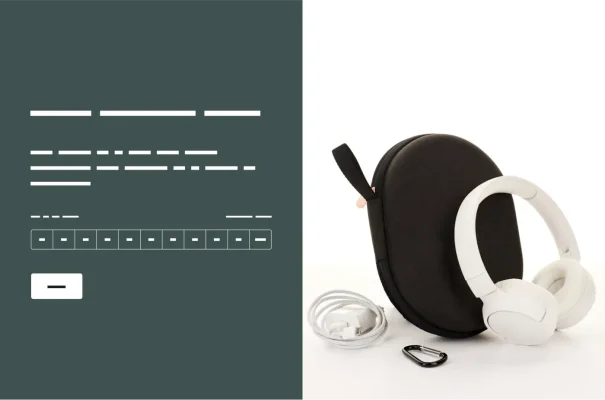Software And App Customer Feedback With NPS® Survey Template
Used 16,000+ times
Use our free software NPS survey template and get immediate customer feedback.
NPS survey template for software and apps

Find out what’s really behind your Net Promoter® Score. The Software and App Customer Feedback with NPS is specifically designed for software companies. Use it to help you understand the factors that are contributing to your software company’s NPS so you can make improvements or spotlight where you already shine.
What is the Net Promoter Score?
A Net Promoter Score (NPS) is a marketing metric that measures customer loyalty and helps determine how well your business is doing. This approach is specifically made by asking how likely you are to recommend software to others. Customers' answers to this question can provide insights into which software they prefer and where your system might need improvement. Furthermore, a NPS can help you optimize your target audience by learning about other people and industries who might benefit from your software. Learn how to automate a NPS survey.
How is NPS calculated?
A NPS is calculated by subtracting the number of dissatisfied customers from satisfied customers, then dividing that number by the total number of respondents, and lastly multiplying that number by 100. What makes the NPS formula so efficient is that it gauges customer satisfaction. Instead of a binary yes or no answer, customers select how pleased they are with a service or product on a scale of 1 - 10, with the lesser number representing a negative experience and 10 representing a positive experience. Learn more about how to calculate a NPS.
NPS respondent groups
You can better understand how the Net Promoter Score works by categorizing respondents in three ways: Promoters, Passives, and Detractors.
Promoters
Promoters represent the respondents who have had such a positive experience with a software product that they'll recommend it to a friend, family member, or colleague. Recommendations are one of the strongest and most cost-efficient ways to promote because it's a free and credible advertisement and testimonial about how your software can successfully meet consumer needs. Promoters represent word-of-mouth marketing. Promoters respond with a score of 9 - 10.
Passives
Passives are customers who are neither satisfied nor dissatisfied with their experience with particular software and may very well be shopping for the best price. They can be easily influenced to use a competitor's software, but you still have a chance to win them over as Promoters. Passives won't recommend your business to their friends and colleagues, but they won't go out of their way to deter consumers from it. This group responds with a score of 7 - 8.
Detractors
Detractors represent customers who have had such a negative experience with a software product that they share their displeasure with others. As a result, Detractors have the direct opposite effect of Passives, hurting your business reputation by discouraging consumers from using your software. You want to pay close attention to this group because it's here that you'll learn what needs to change for a more positive customer experience. Detractors represent scores from 0 - 6. Improve your Net Promoter Score.
TIP: You can also use a NPS scale of 0 - 7, as some researchers believe the smaller the scale, the more accurate the results will be.
Here’s the NPS math equation using respondent groups:
(Number of Promoters — Number of Detractors) / (Number of Respondents) x 100
TIP: Use this Net Promoter Score survey template to see how you can apply it to software usability.
How measuring NPS can improve your software and application
A Net Promoter Score can help you assess users' attitudes concerning a software's usability. Let's look at some advantages and challenges of measuring a Net Promoter Score—and how it can help improve software.
Advantages of a NPS
Fast and efficient calculation: A Net Promoter Score is a quick and efficient way to learn how customers feel about their user experience with your software. A good way to get authentic feedback is to provide a survey after they've engaged. You'll learn how well your software is performing immediately because the user experience is fresh in their minds. Measure customer loyalty toward your software application.
Works with other metrics: While the Net Promoter Score is a great way to measure customer satisfaction towards the usability of your software, there are different ways to get insights. Understand what drives a target market. In other words, a NPS can work with other metrics helping you achieve the most accurate results when understanding the customer experience.
Reduces customer churn rate: Churn refers to the loss of customers or those who don't repeat as customers. Detractors represent the percentage of churn because of software usability. A NPS can help you discover why Detractors feel that way, so you can tweak your software as needed. For instance, if customers think your software takes too long to load, you can check to see if the images you're using are too large, causing the software to slow down. Overall, a NPS can help you reduce customer churn by solving issues they bring to your attention. Find your Net Promoter Score to minimize the number churn rate of Detractors.
Challenges of a NPS
Not specific to the actual problem: A NPS can give you a quantitative score on the performance of your software application, but it cannot provide a qualitative score. That's not to say that you can't achieve one. Using the right experience management platform, you can get all the feedback and insights you need about your software program. Access this quick-start guide to conducting marketing research strategies.
Focuses only on the customer: A Net Promoter Score is specific to customer satisfaction insights. It’s only inward-looking on how the usability of your software is perceived and how to measure the percentage of loyal customers. That said, the NPS may not be fully accurate because the sample audience might not represent all of the customers who use your software. Reach your target audience.
Doesn't offer a follow-up plan: A NPS can provide a quantitative measure of your software's performance, but it doesn't tell you what to do with that information. It's up to you to prepare a plan of action regardless of what your NPS reflects.
Net Promoter Score benchmarks for software & apps
A recent study was conducted to determine the NPS benchmark score for 17 software and apps: Word, TurboTax, Quicken, QuickBooks, PowerPoint, Peachtree Accounting, Norton Anti-Virus, Mint.com, iTunes, Flash, DropBox, Excel, Dreamweaver, AutoCAD, and ACT! An online NPS survey was conducted to reach people from 75 different countries, where most respondents came from North America, Europe, and Asia. Out of all of the software options, TurboTax had the highest NPS, making TurboTax the benchmark for the software and app industry until someone else can surpass that number.
Since these apps serve different purposes, the benchmark that TurboTax has achieved is contingent on the purpose of the Net Promoter Score. For instance, TurboTax might have another NPS if another study was conducted with only Quicken, Quickbooks, Peachtree Accounting and Excel because these applications are used specifically for bookkeeping. In contrast, the other software systems may serve as supplemental applications. Determining the industry benchmark depends on the specifics of customer loyalty, so you should isolate your standard to relevant products that meet similar needs.
How to read a Net Promoter Score
What determines a good NPS from a bad one? For software as a service (SaaS), accessing a NPS differs from other products and services. Learn how to read a NPS.
A software NPS ranges from -100 to 100, so a higher score represents good performance, and a lower score means your application needs some improvements. Generally, a positive score is considered okay, but the goal is to achieve the highest score possible. The average NPS score for Saas is 41. Here's a basic checklist on how to read a NPS for SaaS:
- -0: Needs improvement
- 1 - 30: Good
- 30-49: Great
- 50+ : Excellent
Recommendations and product referrals
Getting a good Net Promoter Score means asking the right questions. Asking a customer how likely they are to recommend your software to others can be asked in other ways. For instance, "Have you recommended this service to anyone in the past 12 months?" Framing the question this way gives you concrete answers that reflect an actual referral instead of one that's possible. You can also phrase your questions to determine how many respondents have been referred to your SaaS. A helpful approach to supplement a Net Promoter Score is with a good Usability Score.
What is a usability score?
A Usability Score, also known as the standard System Usability Score (SUS), is a survey with 10 questions ranging from 0 - 100. It measures how easily users can navigate a software application while assessing their needs. The purpose of using a SUS is to actively find ways for the software to meet the needs of the user without any issues. A good indicator is observing if users can execute tasks with the least effort. A SUS can also help designers and developers see where the user experience stalls, helping them find the issue and improve the overall usability experience.
Usability for efficiency
The usability metrics for efficiency refer to how quickly users can execute their tasks using your SaaS, otherwise known as task time. Task time is calculated by subtracting the end time from the start time. Here's the equation:
End Time - Start Time = Task Time
Usability for effectiveness
How effective your SaaS is will be based on how much your users find it successful in accomplishing a task. This outcome is measured by the number of errors and the success rate. The success rate is also referred to as the completion rate. Here’s the equation to calculate the success rate for SaaS:
(Total Number of Successful Completions / Total Number of Tasks) x 100
How to improve NPS
The best way to improve your Net Promoter Score is to follow up with Detractors to learn what made their user experience a negative one. You can follow up with a survey that asks more specific questions about their user experience. Next, follow up with Promoters to learn what made their usability experience so positive and use that information to bridge the gap between these two groups. Finally, survey your Passive group to discover what your software needs to turn them into loyal customers. Get more detailed information about how to improve your Net Promoter Score.
Raise your NPS survey template for SaaS
Use your Net Promoter Score to get optimized customer insights for software and other apps. Choose NPS survey templates that will help you improve your NPS. This template is tested, certified, and built by our survey research experts to ask the questions that are most associated with raising the NPS of software companies and products. Send it to your users to uncover what’s driving their rating of your product or service. The feedback you get can be invaluable to improving your product or business.
All you have to do to start using the Software and App Customer Feedback with NPS is sign up or sign in to SurveyMonkey.
NPS®, Net Promoter® & Net Promoter® Score are registered trademarks of Satmetrix Systems, Inc., Bain & Company and Fred Reichheld.
Explore related templates
Explore which features support this survey template
We have so many powerful features to help you launch surveys quickly, but here are our most popular ones for new users.
Customizable survey experiences
Out-of-the-box themes, accessible color palettes, custom fonts, branding, and more.
Many ways to send your surveys
Collect survey responses via email, website, SMS, social media, QR codes, offline, and more.
Survey analysis, no training required
Automatic results summaries, filters, custom dashboards, crosstab reports, text analysis, & more.
Additional resources to help you launch successful survey projects

Success Stories
Read about our customers, explore webinars, and get guides on collecting feedback in your industry.

Blog
Get tips on how to create better surveys, hear the latest product news, or check out our research.

Help Center
Access tutorials on how features work, learn more about billing, and contact Customer Support.


